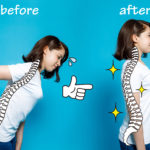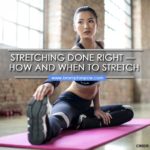Health Blog
Elbow Pain Is Common In Golfers Due To Repetitive Bending & Twisting

So far, we’ve been primarily focusing on repetitive strain injuries (RSIs) that result from performing the same movements regularly in one’s occupation. But sports—both as a profession and a recreational activity—typically require certain motions to be repeated as well, meaning they are yet another potential contributor to RSIs. For golfer’s, one of the most common issues is golfer’s elbow, which leads to a nagging pain on the inside of the elbow that can seriously derail a player’s game.
The medial epicondyle is a piece of bone located on the inside of the elbow that protrudes out from the humerus (upper arm bone). It contains a group of tendons and muscles, all of which allow the forearm, wrist, and hand to bend and move in several directions. When this area becomes irritated or inflamed, the result is medial epicondylitis, or golfer’s elbow.
Golfer’s elbow results from repeated bending of the wrist, which damages the muscles and tendons of the medial epicondyle and eventually leads to inflammation. The condition is especially common in golfer’s because gripping or swinging clubs incorrectly or with too much force can take a toll on these structures over time. But golfer’s elbow can also occur in other sports and from activities that strain the elbow in a similar manner, such as racquet sports, throwing sports, weight training, and even certain occupations that involve lots of bending of the wrist or elbow.
The clearest indication of golfer’s elbow is pain on the inside of the elbow that’s most noticeable when performing any type of gripping activities. Other symptoms include general weakness in the wrist and forearm when gripping, tenderness and swelling on the inside of the forearm, and elbow stiffness or numbness that radiates down from the elbow into the hand. As a result, many basic activities that require gripping or grasping can become challenging.
What a comprehensive physical therapy program can do for your elbow pain
If you start to notice elbow pain or any other signs of golfer’s elbow—especially if you golf or do any of these activities regularly—we strongly recommend visiting a physical therapist as soon as possible. Failing to address this condition early can lead to further complications down the road such as a torn tendon, which is a much more serious problem. A physical therapist will address your condition immediately by evaluating your symptoms and then developing a personalized treatment program based on your abilities, preferences, and goals. A typical treatment program for golfer’s elbow will consist of the following:
- Pain–relieving modalities ice, heat, and massage to reduce your pain levels
- Manual therapy: this type of therapy involves the physical therapist performing a series of mobilizations and manipulations to the forearm and wrist to help the muscles in that region regain their full range of motion
- Stretching exercises: since muscles will generally lose their flexibility from lack of movement, these exercises will target those areas and address any impairments present
- Strengthening exercises: weakened muscles are another consequence of golfer’s elbow, and these exercises will work to build back strength in the muscles of the forearm, elbow, arm, and hand; eccentric exercises—or negative strengthening exercises—are especially helpful for this condition
- Sport–specific functional training: for golfers and other athletes, these exercises will work specifically on the movements involved in your sport, so that you can return to the course or field more quickly and confidently
In our final post, we’ll discuss a related condition called tennis elbow, which occurs due to similar mechanisms in tennis athletes and other individuals who overuse the lower arm and elbow.
August 17, 2021
Back to Health BlogHEALTH BLOG
- A Personalized Physical Therapy Program Can Assist with Whiplash
- Why Older Adults Should Incorporate an Exercise Program
- After an Achilles Injury, Physical Therapists Can Help with Recovery
- AI Can Answer Questions But It’s Best to See a Physical Therapist
- Physical Therapy Can Help With Symptoms of Wryneck
- Reduce the Risk of Pickleball Fractures By Taking Proper Precautions
- Physical Activity May Slow the Progression of Parkinson's Disease
- Too Much Salt in Your Diet? Learn the Dangers of High Sodium Intake
- Suffer From Lower Back Pain? Might Be Time to Take A Break
- The Road to Recovery: Preventing Re-Injury After ACL Surgery
RECENT ARTICLES

- 11 Possible Reasons Your Back HurtsJune 22, 2020

- What Conditions Can a Chiropractor Treat?May 25, 2020

- A Simple Guide to Better PostureApril 30, 2020

- Is Acupuncture Right for Me When I’m Afraid of Needles?March 30, 2020

- Stretching Done Right — How and When to StretchFebruary 26, 2020

